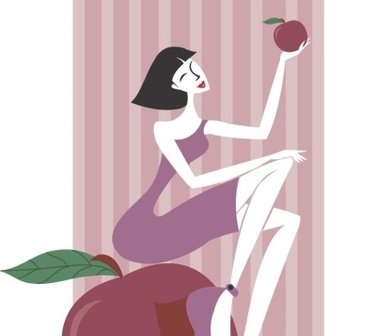Hunting for hidden sugar
If you have realised you are falling into common calorie traps, chances are you are also thinking about what other nasties, such as sugar, could potentially be undoing all of your hard work.
Maria Packard, accredited practising dietitian and spokesperson for the Dietitians Association of Australia, says not all sugars are the same, with sugars being either naturally-occurring or added to foods.
Naturally-occurring sugars
“These are found in milk, fruit, vegetables and legumes, ” Ms Packard says. “They are eaten in smaller quantities, along with many important nutrients.”
Added sugars
“These have been refined from plants such as sugar cane, ” she says.
“They can be added to food or drink in large amounts to make cakes, biscuits and soft drinks. Added sugars may not come with helpful nutrients and can increase the energy of a food or drink, so they are sometimes called energy-dense and nutrient-poor.”
Too much sugar in food or drink can make it high in kilojoules or “energy-dense” — and this has the potential for weight gain.
“We encourage Australians to limit foods containing added sugar, but providing little nutrition, such as sweetened carbonated drinks, ” she adds. “It is recommended that people limit their sugar intake to less than 10 per cent of their daily kilojoule intake; for the average woman that is below 10 teaspoons of sugar per day.”
However, skipping the cakes and biscuits might not be enough for those wanting to cut out sugar from their diet, with Brooke Daley, nutrition practitioner at Body Balancing Nutrition, saying people wanting to reduce their sugar intake often do not realise that foods such as dried fruit, juice, flavoured yoghurts, fat-free dairy products, salad dressings, muesli, pasta and other sauces, peanut butter and bread can all be high in sugar.
She recommends making the following swaps to reduce your sugar intake:
Replace:
Dried fruit — with a small amount of nuts.
Fruit juice — blended whole fruit.
Flavoured yoghurts — with natural yoghurt and some vanilla essence and fresh berries.
Fat-free dairy products — with full fat dairy.
Salad dressings — with olive oil, apple cider vinegar, mustard, tamari soy sauce or lemon/lime juice.
Muesli — oats and a small amount of nuts.
Sauces — with sugar-free sauces or those made with natural ingredients.
Peanut butter — with natural peanut butter or other nut butters.
Body Balancing Nutrition, 9388 1166, bodybalancing.com.au.
Dietitians Association of Australia, 1800 812 942, daa.asn.au.
Calculate your BMI
“Overweight and obesity are commonly defined in adults by body mass index (BMI), ” dietitian Maria Packard says. “BMIs are calculated using height and weight. Weight (in kg) divided by the height (in metres) squared, ” she says.
So, if your weight is 60kg and your height is 1.6m — your calculation would be 60kg/(1.6m x 1.6m) = 23 BMI. There are also various calculators online.
Ms Packard explains the BMI groupings:
less than 18.5kg/m2 = underweight
18.5–24.9kg/m2 = healthy
25.0–29.9kg/m2 = overweight
30.0kg/m2 and above = obese
Note: BMI groups are not always the best indicator of health, so seek the advice of your health practitioner.
Finding hidden kilojoules
Nutrition practitioner Brooke Daley crunches the numbers on hidden kilojoule-laden foods you may have thought were healthy.
Blueberry muffin: 2092-2510kj (or 500-600 calories)
Banana bread: 1046-1255 kj (or 250-300 calories)
A serve of granola with fruit and yoghurt: 1674 kj (or 400 calories)
Fruit juice (500ml): 920kj (220 calories)
Ice coffee (600ml) :1674kj (or 400 calories)
© The West Australian









